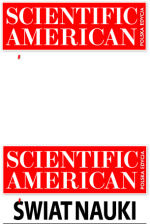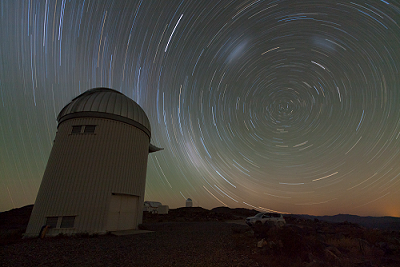 2006
2006
 2008
2008
 2010
2010
 2012
2012
 2014
2014



 |
‘Telescope or kaleidoscope – sky observations in Chile’
‘The Optical Gravitational Lensing Experiment’
KRZYSZTOF ULACZYK - author of photographs
|

|
Description popularizing the research project
Poets do know such altered states of consciousness when the whole Universe is spinning and stars are within their grasp, when every single bright spot in every constellation can be named, when in a blink of an eye they can get to the very heart of the galaxy, look at the void beyond it or glance into a black hole. Everybody, who for a while feels they are the chosen one filled with the poetic spirit, has the right to use such metaphors. Yet very few people on Earth, in our Solar System, in our Milky Way, have the, aptly named, inalienable rights to treat themselves as the chosen ones of the Universe and use the above mentioned poetic metaphors quite literally.
Many of the lucky ones are in Chile, in Las Campanas astronomical observatory, especially in the part with Southern Station of University of Warsaw. A solitary dome in the Andes towers above the Atacama Desert, the driest place in the world. The place offers perfect weather conditions for astronomical observations. Nothing obscures or blurs the view of the Magellanic Clouds and the centre of Galaxy. The Observatory is fitted with impressive, state-of-art equipment that makes it possible to show the celestial bodies and phenomena, which so far remained invisible and unknown to everybody, and foresee existence of something that may be observed in the future with the next generations of better and better equipment. Twenty new planets outside the Solar System, a few hundred thousand unknown variable stars and a few thousand phenomena suggesting existence of celestial bodies of great mass, have been observed in the twenty years of OGLE project conducted by Polish astronomers. It is just the beginning of the search.
Astronomers surely do know the states of mind which can be expressed only with metaphors. Aren’t the names of celestial bodies filled with love that started on Earth?
Abstract
The Optical Gravitational Lensing Experiment (OGLE) project is a long-term astronomical sky survey. Its main scientific goals include the search for extrasolar planets, studies of the dark matter with microlensing phenomena, examination of the Galactic structure and analysis of different time scale variability of hundred millions regularly observed objects. Scientific results of the project are impressive. In 1993, the discovery of the first microlensing events was announced. Between 1992 (when the project began regular observations) and May 2009 (when the third phase OGLE-III ended) the OGLE project detected: • 20 new extrasolar planets • more than 4000 microlensing events • several hundred thousand new variable stars. The last most outstanding scientific achievements include the discovery of the first extrasolar planets with two new photometric techniques: transits and gravitational microlensing (for example the discovery of the analog of the solar system and the discovery of the exoplanet with the smallest known mass). During the first phase of the project, observations were performed using the 1-m Swope telescope at the Las Campanas Observatory in Chile. The project turned out to be very successful but suffered from many limitations with the most severe – limited availability of the telescope time. It was clear from the very beginning that a dedicated telescope and new generation instruments are necessary to accomplish the main goals of the project. The modern 1.3-m Warsaw Telescope was built at the same observatory. This location provides excellent climate conditions and visibility of Magellanic Clouds and Galactic center. Regular observations started on January 6, 1997. The main instrument – a wide field CCD camera - is regularly upgraded. Since 2009, observations have been carried out using the third generation 32-chip mosaic CCD camera – one of the largest scientific instruments of this kind worldwide. The collected data are regularly made public. OGLE team: Andrzej Udalski, Marcin Kubiak, Michał Szymański, Grzegorz Pietrzyński, Igor Soszyński, Łukasz Wyrzykowski, Radosław Poleski, Szymon Kozłowski, Paweł Pietrukowicz and Krzysztof Ulaczyk Astronomical Observatory of the University of Warsaw, Al. Ujazdowskie 4, 00-478 Warsaw, Poland
Patronat honorowy
Leszek Jodliński
Dyrektor Muzeum Śląskiego w Katowicach
Zygmunt Łukaszczyk
Wojewoda Śląski
Jan Malicki
Biblioteka Śląska
Piotr Uszok
Prezydent Katowic
Adam Matusiewicz
Marszałek Województwa Śląskiego






 The view to the south celestial pole – 12.11.2010, Las Campanas Observatory in Chile
The view to the south celestial pole – 12.11.2010, Las Campanas Observatory in Chile







